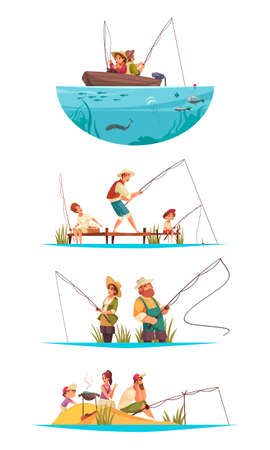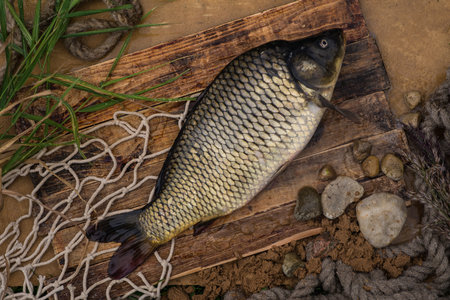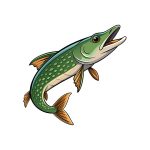The Vital Role of Tides and Currents in Coastal Fishing
When it comes to coastal fishing, understanding tides and currents isn’t just a bonus—it’s the foundation for success. For many beginners, ignoring these natural rhythms can turn a promising day on the water into one filled with frustration and empty coolers. Tides and currents do more than move water; they dictate where fish travel, when they feed, and how accessible different fishing spots become. As the tide rises or falls, baitfish are swept along, drawing game fish behind them in pursuit of an easy meal. In the same way, shifting currents can either concentrate fish in certain areas or scatter them far and wide. Whether you’re casting from a sandy beach, jetty, or rocky shoreline, knowing how these forces shape fish behavior is your first step toward joining the ranks of successful anglers. Understanding this dynamic environment sets the stage for not just catching fish—but truly connecting with the ever-changing pulse of coastal life.
2. Common Rookie Mistakes: Why Beginners Overlook Water Movement
When it comes to coastal fishing, many beginners fall into the trap of overlooking tides and currents—two critical elements that can make or break your day on the water. But why does this happen so often? Let’s dig into the most common reasons:
Misunderstood Weather Apps
With so many weather and fishing apps available, it’s easy for new anglers to assume they’re fully prepared just by checking the basic forecast. However, most standard weather apps only show wind speed, temperature, and maybe sunrise times. They often bury or completely omit detailed tidal charts and current predictions, leaving rookies in the dark about when fish are actually feeding. Without knowing how to find or interpret this info, beginners miss out on prime fishing windows.
Gear-First Mentality
Another classic pitfall is putting all the focus on gear. It’s tempting to believe that buying the latest rod, reel, or lure will guarantee success. While having good equipment helps, even top-tier gear won’t compensate for fishing during slack tide when the fish aren’t moving. Ignoring water movement can turn a promising trip with fancy tackle into hours of frustration.
Lack of Basic Knowledge
Sometimes, it simply comes down to not knowing where to look for information about tides and currents. If you didn’t grow up near the coast or have a mentor showing you the ropes, these concepts might seem mysterious or irrelevant at first glance. Many newcomers don’t realize how much local knowledge goes into timing a successful outing—and how much of it revolves around reading water movement.
Table: Why Beginners Miss Tides & Currents
| Mistake | Description | Result |
|---|---|---|
| Using basic weather apps | Apps skip over detailed tidal/current info | Poorly timed trips with low fish activity |
| Focusing only on gear | Investing time/money in rods & lures instead of conditions | Disappointment despite “perfect” setups |
| Not knowing what matters | No exposure to local knowledge or resources | Unaware of why/when fish bite best |
The Takeaway for New Anglers
If you want to move beyond beginner mistakes and start catching more consistently along America’s coasts, learning how to read and plan for tides and currents is essential. Don’t let overlooked details keep you from enjoying those classic days by the water—start with understanding what makes the fish move, and you’ll be miles ahead of most newbies.

3. How Ignoring Tides and Currents Impacts Your Catch
If you’ve ever spent hours casting into the surf only to come home empty-handed, you’re not alone. Many local anglers can recall those slow days on the water—days when fish seemed to vanish without a trace. More often than not, these quiet spells are tied directly to overlooking the importance of tides and currents. In fact, seasoned fishermen along both the Atlantic and Pacific coasts will tell you that understanding the rhythm of the water is just as crucial as picking the right lure or bait.
Take it from Mark, a lifelong Jersey Shore fisherman who remembers his first summer chasing stripers. “I used to hit the beach whenever I had free time, but I never thought about the tide. I’d cast for hours during slack water and wonder why nothing was biting,” he laughs now. “It wasn’t until an old-timer explained how stripers move with the incoming tide that things started clicking.” Stories like Mark’s are echoed by countless anglers across coastal America, proving that ignoring these natural patterns means missing out on prime fishing windows.
Another common tale comes from Anna, who fishes the rocky inlets near Santa Cruz, California. She recalls a morning where she arrived brimming with excitement, only to find herself staring at calm, lifeless waters. “There was no movement, no baitfish—nothing,” Anna says. “Later I learned that the outgoing tide pulls bait past those rocks and brings in predatory fish. I was there at dead low, basically fishing in a desert.”
Ignoring tides and currents isn’t just about missing bites; it’s about missing opportunities altogether. Fish are tuned into their environment—their feeding and movement are dictated by shifting water flows. When beginners overlook this, they end up spending valuable hours where their chances of success are slim to none.
The local wisdom is clear: if you want better stories than ‘the one that got away,’ start paying attention to what the water is doing. The difference between a slow day and a full cooler might just be knowing when to show up—and when to take a break for coffee instead.
4. Reading Tide Charts: The Ocean’s Hidden Schedule
If you’re new to coastal fishing, tide charts might look like a page out of an advanced math textbook—full of numbers, symbols, and lines. But don’t worry! Once you get the hang of them, tide charts become your best friend for planning a successful day on the water. In fact, most American anglers wouldn’t dream of heading out to the beach or jetty without first checking what the ocean has in store.
Why Tide Charts Matter for Coastal Fishing
Tide charts are more than just a schedule of high and low tides—they’re a map to when fish are most likely to be feeding. Certain species become active at different stages of the tide, and understanding this “hidden schedule” can make all the difference between coming home empty-handed or with a cooler full of fish.
How to Read a Basic Tide Chart
| Chart Element | What It Means | Fishing Tip |
|---|---|---|
| High Tide | The highest water level for the day | Great time for casting into deeper waters near shore |
| Low Tide | The lowest water level for the day | Explore exposed structure; target fish trapped in pools |
| Tide Times | Specific hours when tides peak or bottom out | Plan your arrival 1-2 hours before these times |
| Tidal Range | The difference between high and low tide heights | Bigger ranges mean stronger currents and more movement—often better fishing! |
User-Friendly Resources American Anglers Trust
- NOAA Tide Predictions: Reliable and region-specific charts from the National Oceanic and Atmospheric Administration (www.tidesandcurrents.noaa.gov)
- Tide apps: Apps like “Tide Alert USA” or “My Tide Times” offer real-time data right on your phone—even offline!
- Local tackle shops: Most post daily tide schedules and love sharing tips about prime fishing times in your area.
Practical Tips for Beginners
- Simplify it: Start by noting just two things—the time of next high and low tide for your chosen spot.
- Match your plan: If you want surf perch, try an hour before high tide; targeting striped bass? Early outgoing tide is often best.
- Keep records: Jot down which tides brought you luck—over time, you’ll spot patterns unique to your favorite beaches or jetties.
The Bottom Line
No need to feel intimidated by tide charts. With just a little practice and the right tools, you’ll soon see why reading the ocean’s schedule is second nature for seasoned American anglers—and how it can help you break through one of the biggest beginner barriers to coastal fishing success.
5. Tuning In to Nature: Visual Clues from Shore to Sea
If you’re new to coastal fishing, it’s easy to get caught up in gear and gadgets, but sometimes your best fish finder is simply your own eyes and nose. Ignoring the subtle natural signs that unfold along the shore can keep you from landing a true catch. From bustling seabirds to shifting schools of baitfish, nature offers a steady stream of clues—if you know what to look for.
Watch the Birds, Especially Gulls
One of the most reliable signals comes from above. Gulls swirling and diving are like floating neon signs for hungry anglers. These birds aren’t just out for a joyride; they’re homing in on surface-feeding baitfish, which often means bigger game fish are lurking below. If you spot gulls congregating or suddenly swooping over one area, it’s time to grab your rod and check it out.
Follow the Baitfish Ballet
The way baitfish move—darting in tight clusters or leaping in silver flashes—can hint at unseen predators below. Calm water might look peaceful, but keep an eye out for sudden ripples, nervous schools skipping across the surface, or a patch of water that seems “alive.” These patterns often reveal active feeding zones as tides change and currents stir up food.
Let Your Nose Lead You
Don’t underestimate your sense of smell on the shoreline. The sharp scent of brine or even a whiff of fishy aroma can signal areas where tides have recently shifted, concentrating bait and attracting larger fish. Some seasoned local anglers swear by following their noses straight to productive spots when the tide turns.
Nature Knows Best
The secret to consistent success isn’t always high-tech—it’s learning to read the world around you. By tuning in to these visual and sensory clues, you’ll get ahead of other beginners who ignore what nature has been broadcasting all along. Next time you hit the coast, slow down and let nature guide you—your next big catch might be closer than you think.
6. Local Wisdom: Tapping Into Community for Tidal Tips
One of the best kept secrets among seasoned coastal anglers isn’t a fancy lure or a high-tech gadget—it’s local knowledge. For beginners, understanding tides and currents can be overwhelming, but you don’t have to figure it out alone. Connecting with local fishing clubs, chatting up folks at the bait shop, or joining online forums can fast-track your learning and help you avoid rookie mistakes. These community spaces are where experienced fishers swap stories about the best tide windows for catching stripers off the jetty, or which inlets are safe (or sketchy) when the current starts ripping. Local bait shop owners often know exactly what’s biting and when, since they talk to dozens of anglers every day and have seen patterns play out over years. Online groups—whether on Facebook or regional fishing forums—can also be goldmines for timely tips and honest advice. Don’t be shy about asking questions; most community members remember being new and are happy to share their hard-earned wisdom. By tapping into this network, you’ll not only boost your chances of success but also gain a deeper appreciation for how tides and currents shape each day’s fishing opportunities along your stretch of coastline.


